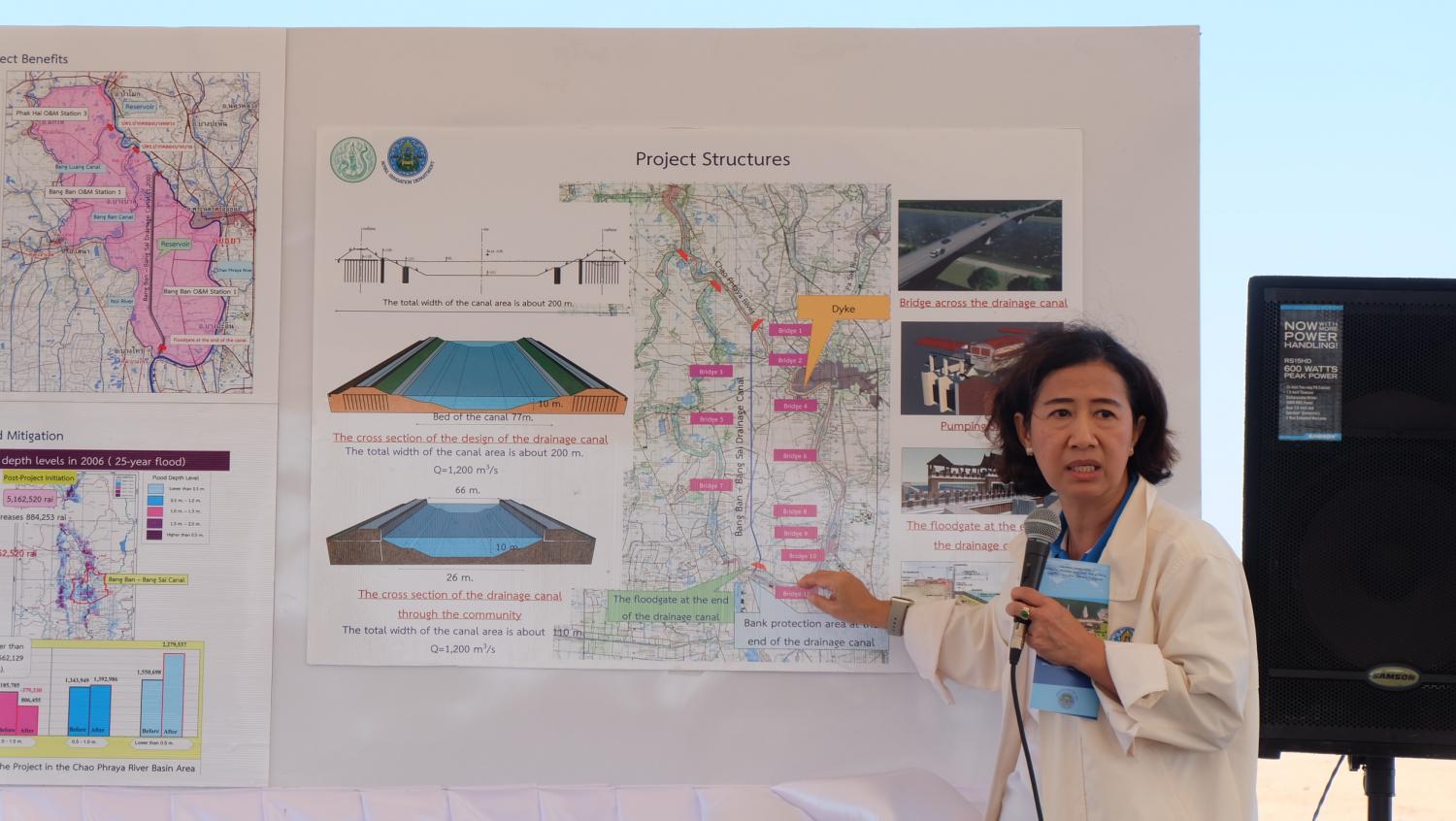
Water management innovations and the resilience of local people have helped turn a flood-prone community in Rangsit's Nong Sua district of Pathum Thani into a prototype multi-purpose water catchment area.
However, severe drought presents a new challenge.
Nine years ago, when the central region of Thailand was hit by its worst floods in decades, the orange orchard area was inundated for months. Now, the memory of those floods is all that remains of the problem.
The farm area, known as the "Rangsit Community'', located in tambon Bueng Cham Or, is a classroom for water management that every farm in Thailand could learn a lesson from.
Jittiporn Chantarojsiri, head of the International Collaboration Section of the Hydro-Informatics Institute (HII), under the Ministry of Higher Education, Science, Research and Innovation, said her organisation has provided technical assistance ever since the disaster of 2011.
"More than 80% of the area is used for agriculture. We helped locals improve flood gates and design furrows to provide appropriate space along rows of trees and water moats. With well-designed flood gates and water draining space within the orchards, the community can divert and retain water runoff from the Raphiphat canal which also helps reduce the severity of flooding in neighbouring areas," she told reporters who visited the community late last month.
The trip was a field trip as part of the International Conference on Policies, Laws, and Regulations for Water Management in Southeast Asia Countries.
The Rangsit Community has been home to orchards for over a century. Prior to that, the area was rice paddies until villagers began growing oranges which are more water-intensive and disease-prone.
Amid changing climatic conditions, farmers over the past few year, have switched to producing palm oil to mitigate the effects of drought. Currently, palm trees and rice make up the majority of the crops grown in the community.
"Furrows between rows of palm oil trees can serve as catchment areas. Therefore, locals have water for domestic use and can grow and harvest crops all year round rather than seasonally. Besides, additional water can solve the problem of acidic soil," she said.
Surajate Boonya-Aroonnet, director of the Hydro-Informatics Innovation Division at the HII, said they have also introduced telemetry to record weather parameters, including temperature, humidity, atmospheric pressure and precipitation.
HII installed one telemetry station in the community.
"This is one of 965 automatic weather stations we installed all over the country. Each one collects data from sensors and sends it back to our office for processing before we update locals on the water situation," he said.
Yet, technology alone is not enough. HII has praised the fighting spirit of local farmers.
"Farmers here have developed a machine to suck sediment from moats in orchards. The sediment is not thrown away, and villagers turn it into organic fertilisers," said Apichai Noyswang, the deputy village chief.
Mr Apichai said the villagers no longer fear floods because of the measures taken over the past few years.
For example, the Royal Irrigation Department (RID) began working on the Bang Ban-Bang Sai flood drainage canal project in Ayutthaya in January last year. The construction is expected to take five years.
"The canal scheme is one of nine plans for flood mitigation in the lower Chao Phraya area designed to release water runoff into the Gulf of Thailand more effectively and it will protect the Ayutthaya's Historical Park better than flood barriers," said Phattaporn Mekpruksawong, an expert on civil engineering at the RID.
Yet villagers are now also faced with worsening droughts in the summer months.
"Water normally dries up in December and January every year. However, drought hit us sooner than usual in November [last year]. At the moment, we still have a sufficient water supply, but I am afraid whether we can hold out over the next two months," he said.
The Agriculture and Cooperatives Ministry says Thailand could face the worst drought in a decade due to uncertain rain patterns, prompting authorities to prepare water storage facilities.
Thantananach Junkum, an official at Bueng Cham Or Tambon Local Administration, said she has used the "New Theory" introduced by His Majesty the King Bhumibol Adulyadej The Great after drought ruined the community 30 years ago and withered her rice paddy fields.
"I cried when my yield ended up being four times smaller that year. But I refused to give up. I told myself I won't let it happen again," she said.
To fight against drought, Ms Thantananach diversified and allocated five rai land to growing flowers, vegetables and fruit, and dug moats and several wells to store water from the rainy season.
For this drought, she said there is still water in her orchard, enough even if the rain comes later than June.
"During the drought, when total farm yields drop, I will still have something to eat.
"I can also the sell vegetables and fruit in the village. So, I feel secure."